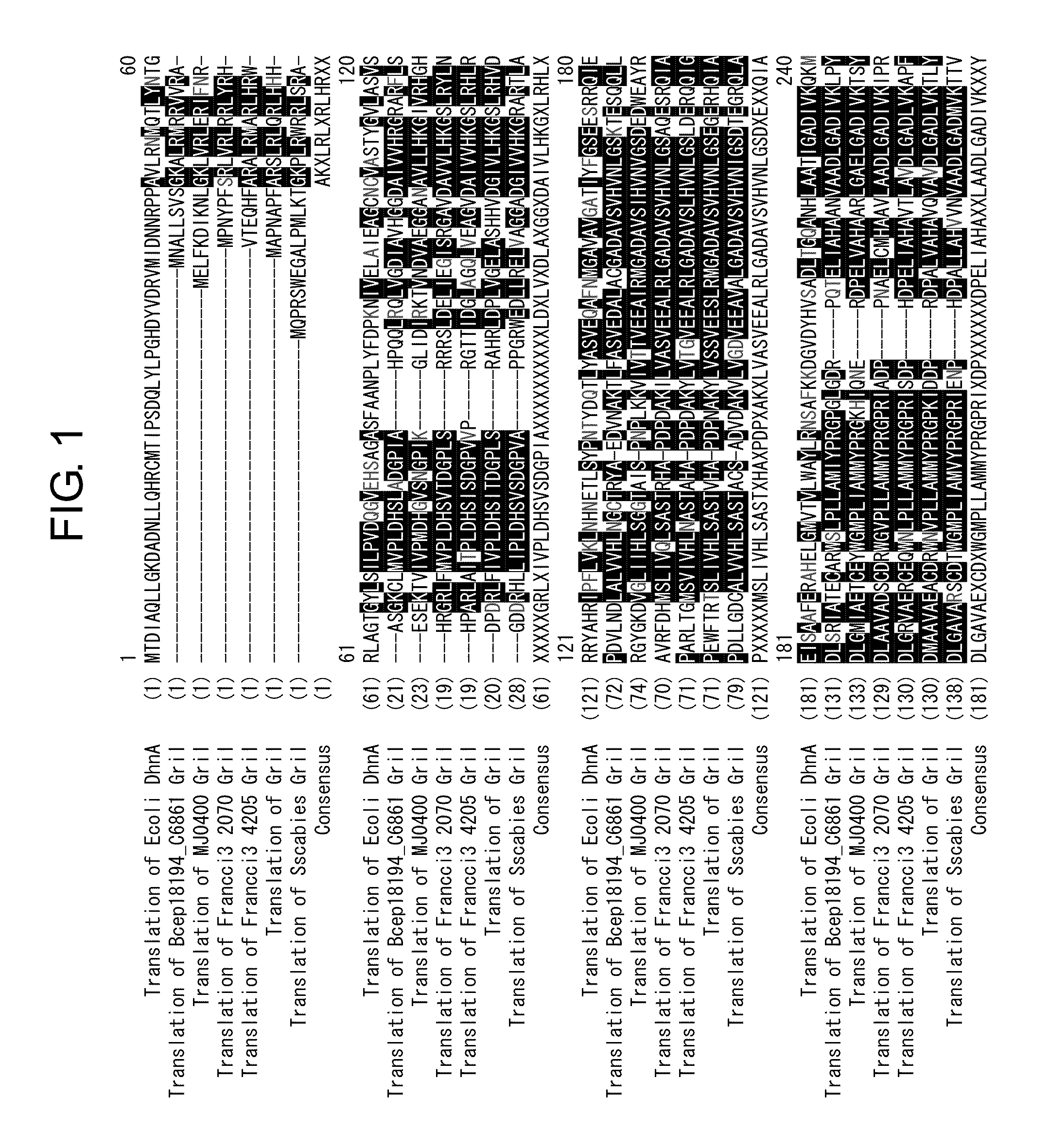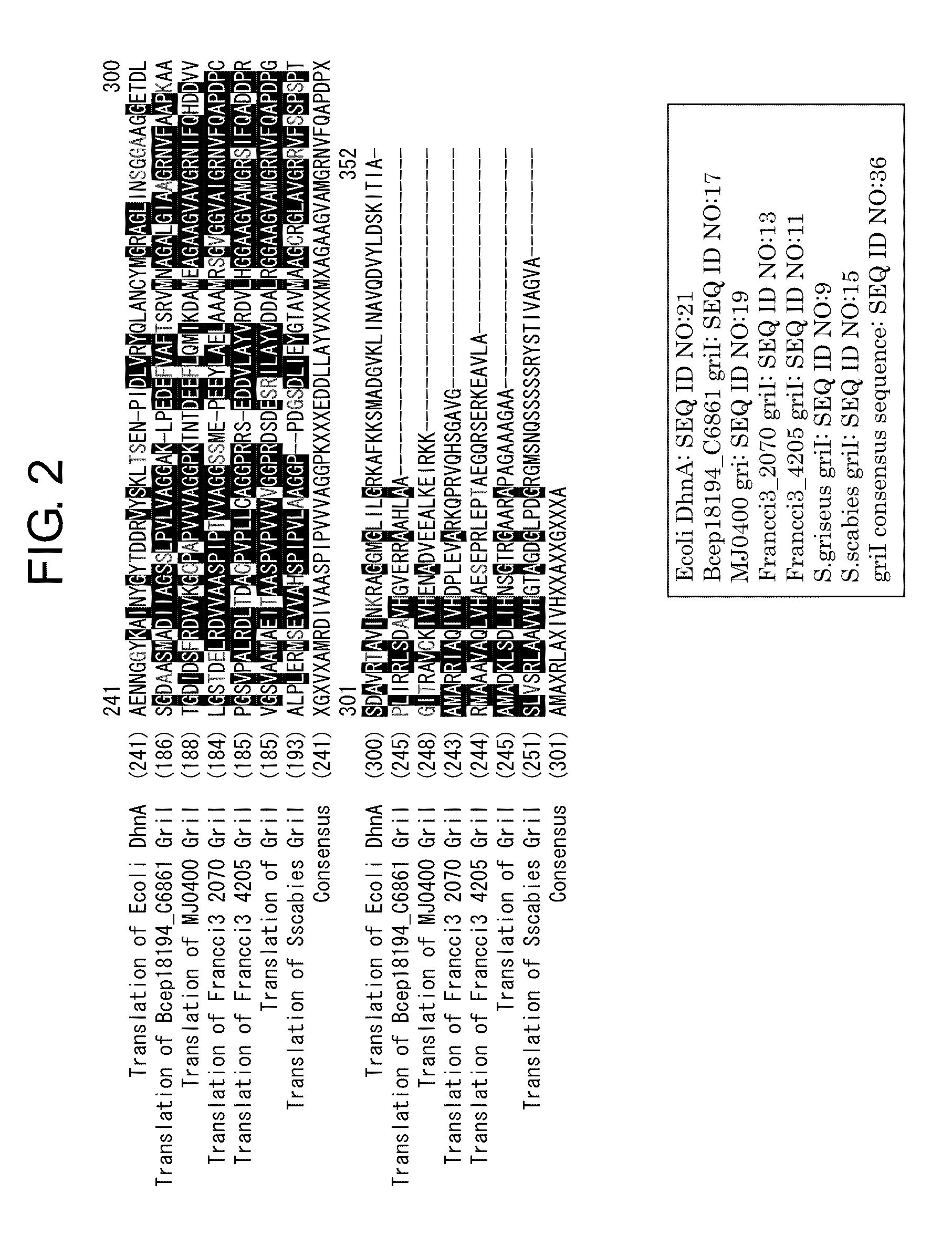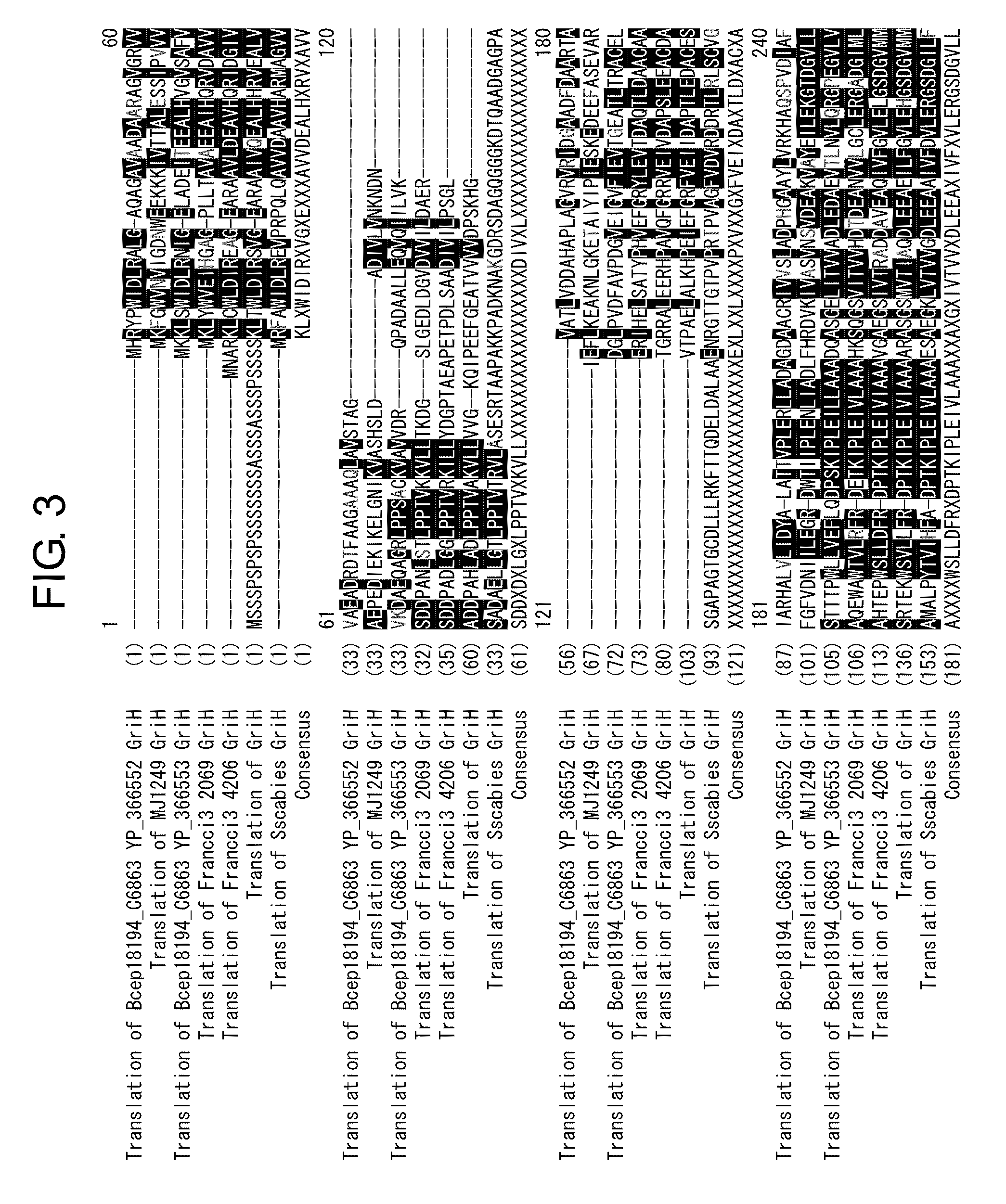Method for producing an aminohydroxybenzoic acid-type compound
a technology of aminohydroxybenzoic acid and compound, which is applied in the direction of lyase, enzymology, biochemistry apparatus and processes, etc., can solve the problems of low yield, high cost, and inability to produce monomer precursors with high purity
- Summary
- Abstract
- Description
- Claims
- Application Information
AI Technical Summary
Benefits of technology
Problems solved by technology
Method used
Image
Examples
example 1
Construction of a Plasmid for Expressing the Gene of the 3,4-AHBA Synthesis Enzyme Derived from S. griseus IFO13350
[0091](1) Acquisition of the Gene Encoding the 3,4-AHBA Synthesis Enzyme Derived from S. griseus IFO13350
[0092]The sequence of a griI gene and a griH gene (hereinafter, both the genes are together referred to as the gene of the 3,4-AHBA synthesis enzyme) derived from S. griseus IFO13350 have been already reported (J. Bio. Chem., 281, 823-833 (2006)). Primers shown in SEQ ID NOS: 1 and 2 were synthesized with reference to this reported sequence, and a region encoding the genetic sequence of the 3,4-AHBA synthesis enzyme was amplified by PCR from the chromosomal DNA of S. griseus IFO13350 prepared according to a standard method (Saito and Miura's method [Biochem. Biophys. Acta., 72, 619 (1963)]). Pyrobest DNA polymerase (supplied from Takara Shuzo Co., Ltd.) was used for the PCR, and the reaction was performed under reaction conditions according to the protocol recommende...
example 2
Production of 3,4-AHBA by Corynebacterium glutamicum Using a Fusion Gene Encoding the griIH Gene Derived from S. griseus IFO13350
[0099](1) Transformation of Corynebacterium glutamicum Using the Fusion Gene Encoding griIH Gene Derived from S. griseus IFO13350
[0100]Corynebacterium glutamicum wild-type strain, C. glutamicum ATCC13869 or C. glutamicum AJ110135 was transformed with the plasmid pPK4griIH constructed in Example 1 (promoter is derived from the PS2 gene of C. glutamicum ATCC13869 and the griIH gene is derived from S. griseus IFO13350). Bacterial strains were grown and selected in CM2G agar medium (yeast extract 10 g, trypton 10 g, glucose 5 g, NaCl 5 g and agar 15 g were prepared in 1 L of water, which was then sterilized at 120° C. for 20 minutes) containing 25 mg / L of kanamycin. In C. glutamicum AJ110135, aspartokinase was desensitized and the lysine permease was deleted by introducing the mutation which substitutes the alanine residue at position 279 with the threonine re...
example 3
Confirmation of the Effect of the Enhanced Expression of the Mutated Aspartokinase Gene in Which Feedback Inhibition is Desensitized or Enhanced Expression of the Pyruvate Carboxylase Gene, on Improved Formation of 3,4-AHBA in C. glutamicum AJ110135
[0108](1) Construction of a Plasmid Expressing the Mutated Aspartokinase Gene Derived from C. glutamicum AJ110135 in which Feedback Inhibition is Desensitized
[0109]The sequence of the mutated aspartokinase gene derived from C. glutamicum AJ110135 in which feedback inhibition is desensitized (hereinafter described as AKfbr) has been already determined and its mutation point had been reported (JP 2004-261150-A). The primers shown in SEQ ID NO: 39 and SEQ ID NO: 40 were synthesized with reference to this sequence, and a region including the promoter in the 5′ upstream region of the initiation codon of the AKfbr gene was amplified by PCR from chromosomal DNA of C. glutamicum AJ110135 prepared according to standard methods. Pyrobest DNA polyme...
PUM
| Property | Measurement | Unit |
|---|---|---|
| temperature | aaaaa | aaaaa |
| cultivation time period | aaaaa | aaaaa |
| pH | aaaaa | aaaaa |
Abstract
Description
Claims
Application Information
 Login to View More
Login to View More - R&D
- Intellectual Property
- Life Sciences
- Materials
- Tech Scout
- Unparalleled Data Quality
- Higher Quality Content
- 60% Fewer Hallucinations
Browse by: Latest US Patents, China's latest patents, Technical Efficacy Thesaurus, Application Domain, Technology Topic, Popular Technical Reports.
© 2025 PatSnap. All rights reserved.Legal|Privacy policy|Modern Slavery Act Transparency Statement|Sitemap|About US| Contact US: help@patsnap.com



